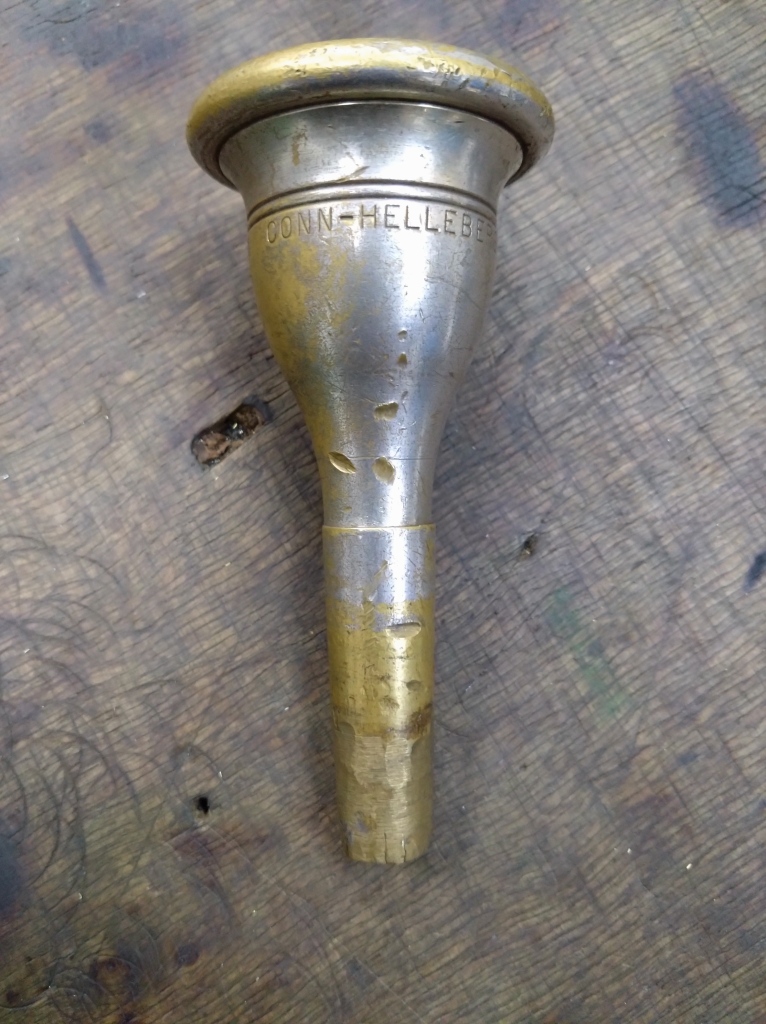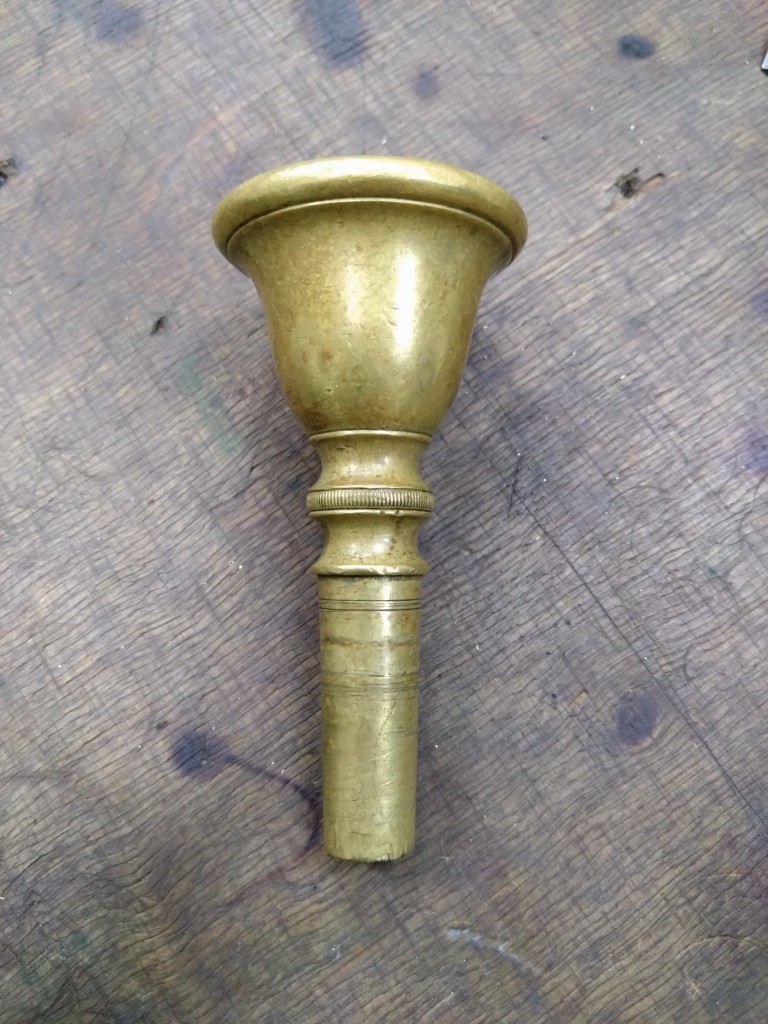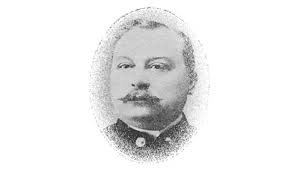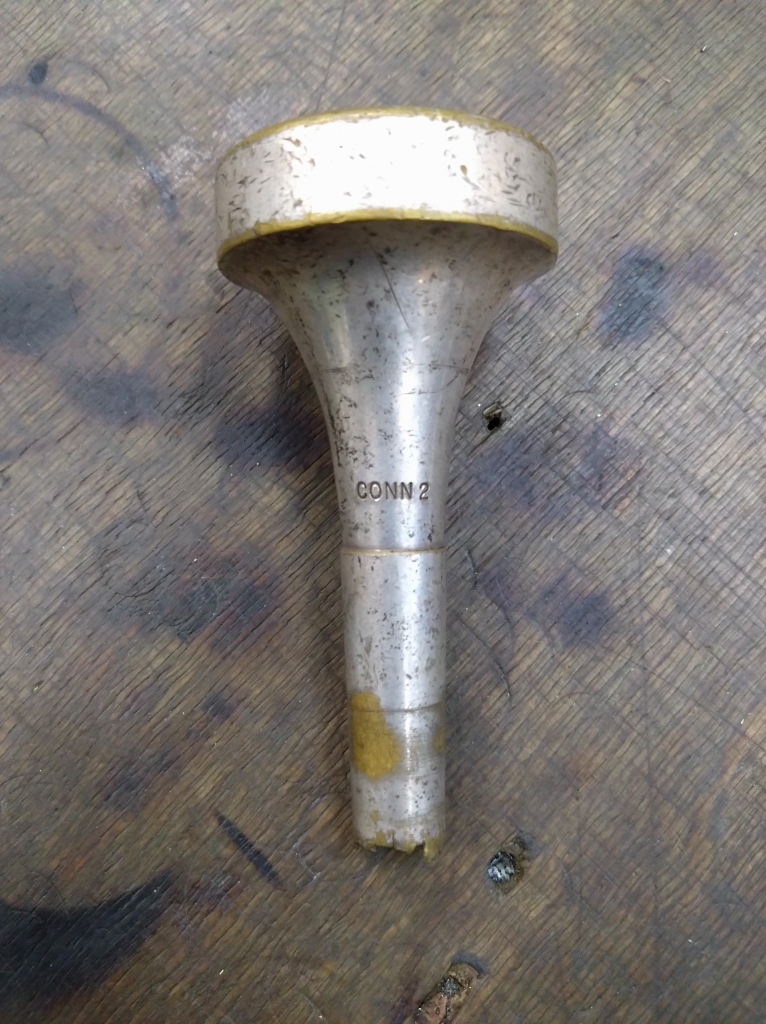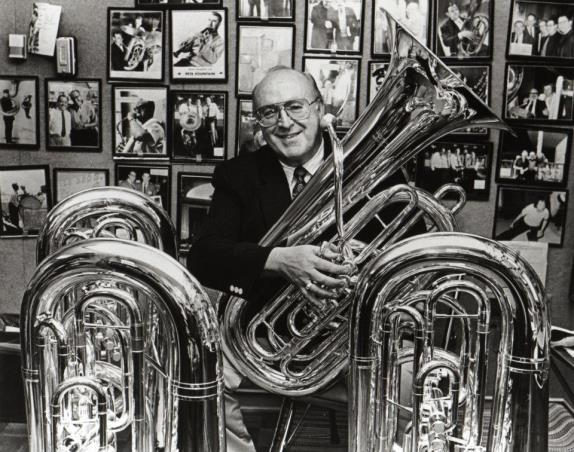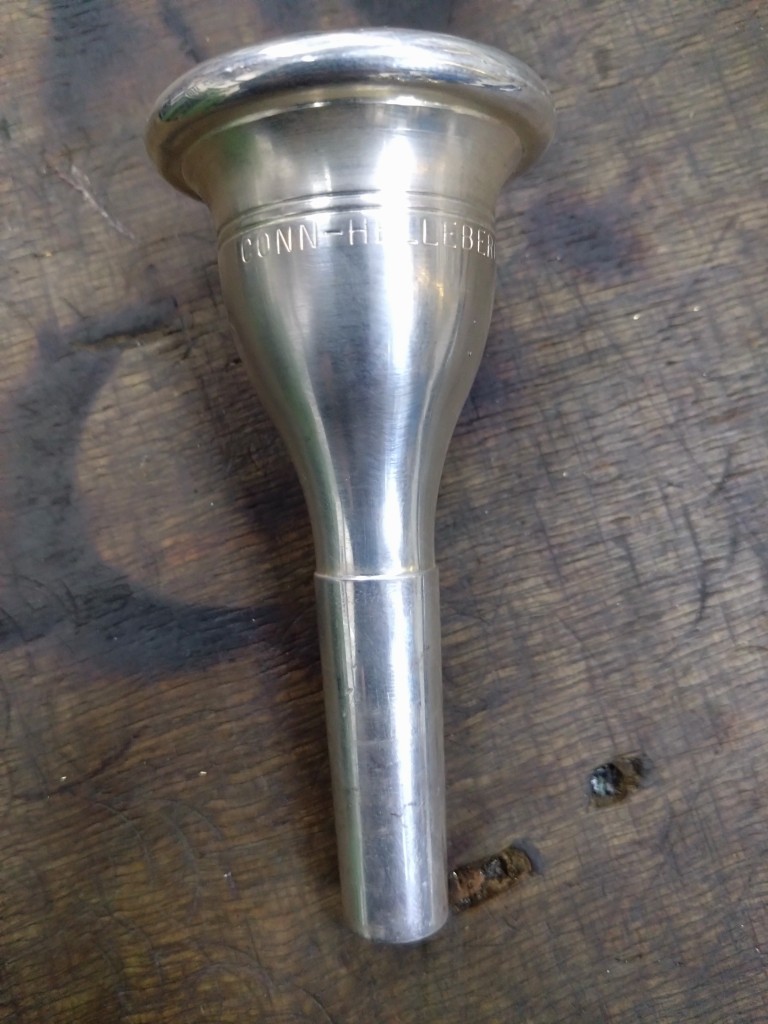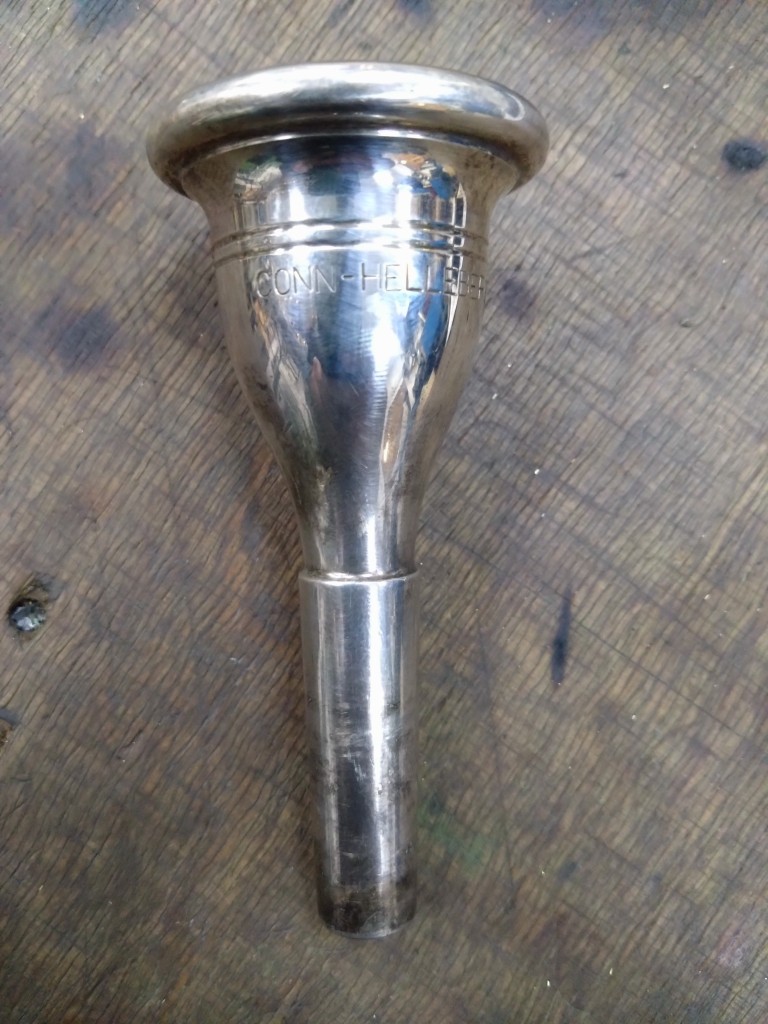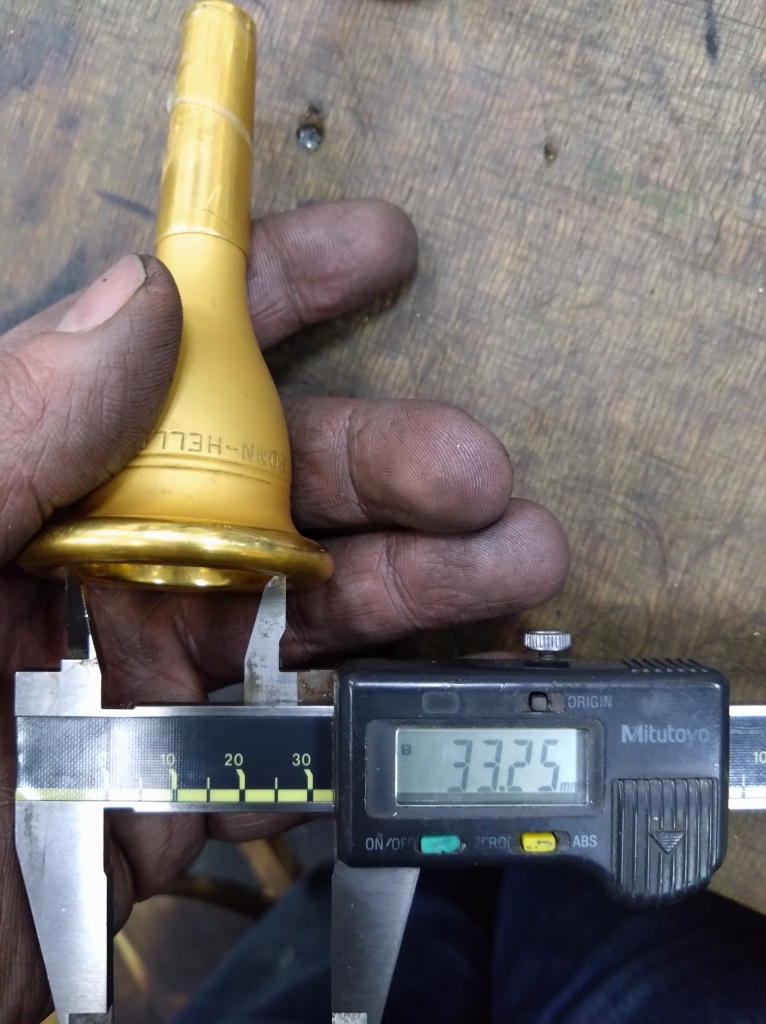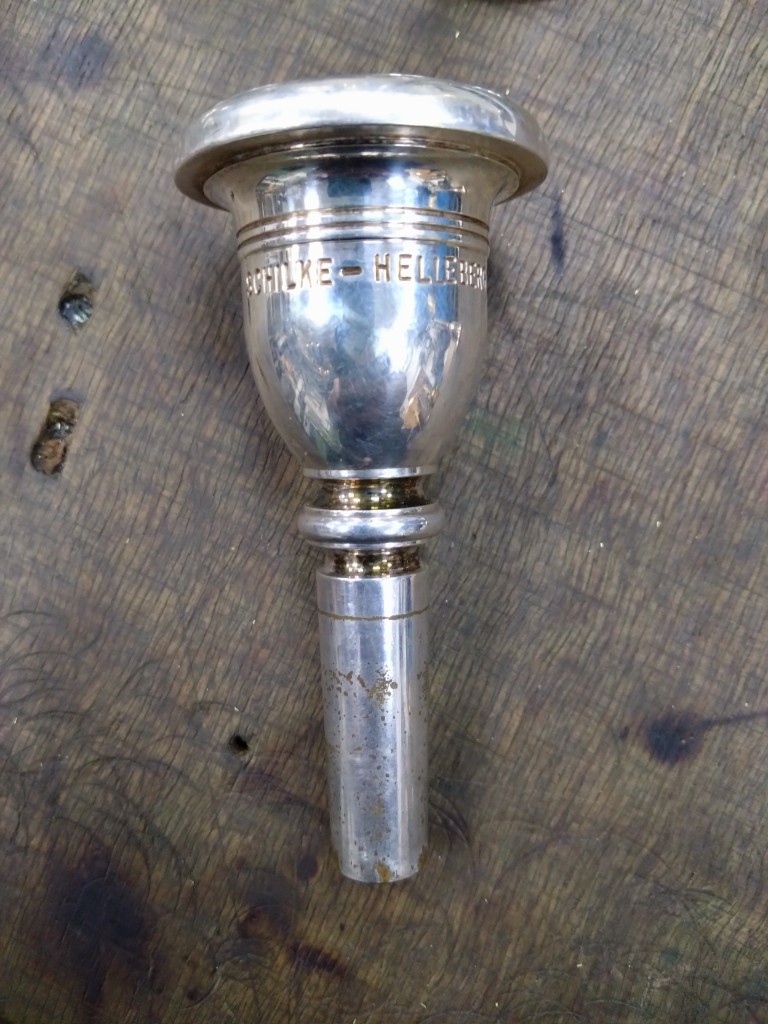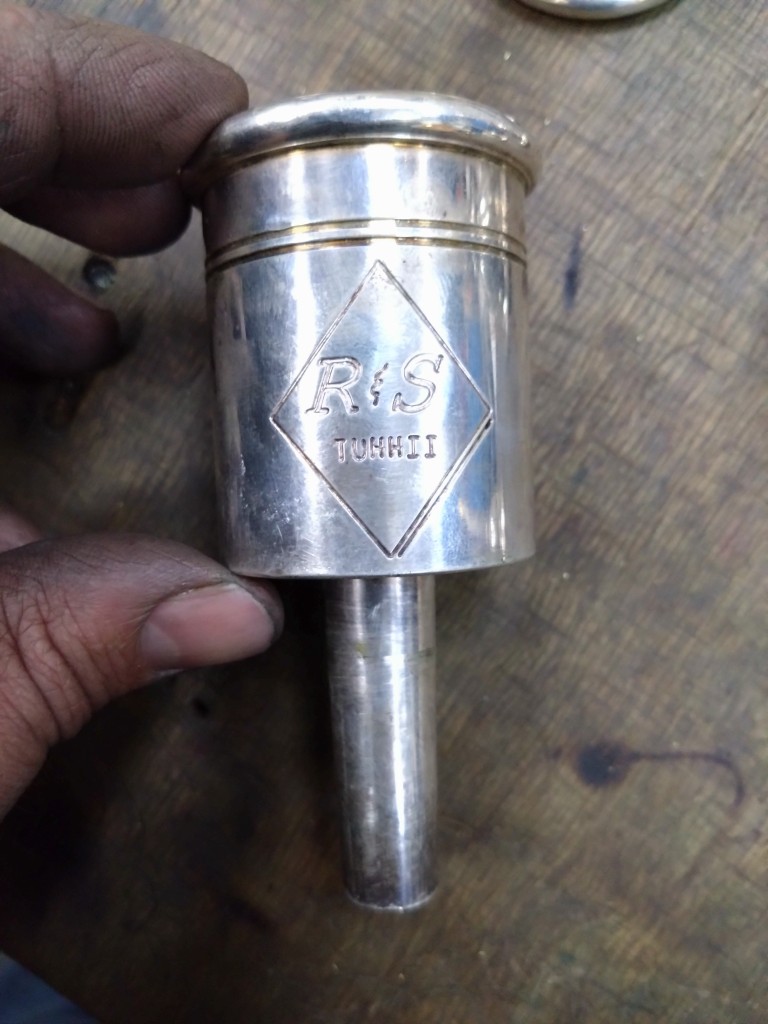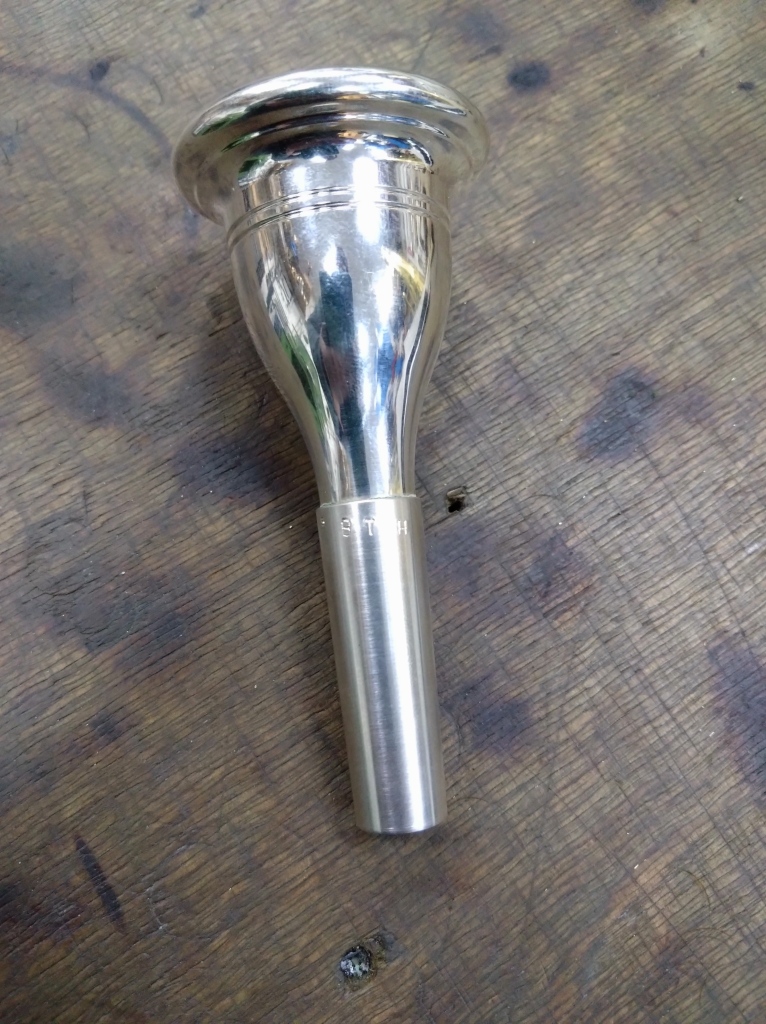It suddenly hit me as I was writing this, that this blog has been around for quite a few years now. My heartfelt thanks to all of you dear readers for your support and kind words over the years. I honestly never thought it would go on for so long. Who knew there were so many old tubas to write about…
INTRODUCTION
I’ve been wanting to write a bit about one of the most iconic tuba mouthpieces of the 20th century for some years now. However, there are several people far more qualified than me to write about said mouthpieces but sadly, some of them have passed away over the years and others haven’t yet gotten around to it, so I’ve decided to give it a go. I am by no means an “expert” on the subject and I believe with regards to tuba mouthpieces in general, it is an area that suffers from a lack of serious documentation and research, but here we go…
Usually any discussion of the Conn Helleberg mouthpiece, would of course begin with the mouthpiece’s namesakes, August Helleberg and the C.G.Conn company, but I’m not going to do that just yet. Let’s first go back in time a bit further to the 1880s.
THE DRESDEN MOUTHPIECE
Many year ago, a colleague from Dresden called me saying there was an old box of mouthpieces found in the orchestra storage dating back to before 1900 and nobody wanted them. Before they were to be thrown in the trash, he thought maybe I might be interested. A week later, this late 19th century tuba mouthpiece ended up on my work bench.
Many of you already have noticed the cosmetic similarities to the early Hellebergs produced by Conn before World War 2. I have since confirmed this mouthpiece was produced in Germany sometime between 1880 to 1900 although it’s not exactly clear who originally produced it although it was likely one of two firms. What is more remarkable are the internal dimensions.
Miccing out the internal size showed the mouthpiece to have unusually similar dimensions to the larger Conn Helleberg, what nowadays would be referred to as a model 120. The only significant difference is the back bore, which at 7mm is far smaller than the 20th century versions. The mouthpiece plays beautifully on my historical tubas, in fact so much so, I asked a colleague to make me a few copies.
After seeing the dimensions, one might ask themselves, is there any link between this mouthpiece and August Helleberg? Could it be he used something similar in Denmark(home country) or did he see one in the USA, perhaps in the hands of a German immigrant after he emigrated in 1878? Perhaps a more fundamental question, was this design far more common in late 19th century Europe than we are aware of? Sadly I can’t answer any of these questions to a satisfactory degree, but perhaps one of you might dear readers? And with that, let’s move on to Mr. Helleberg himself.
AUGUST “GUS” HELLEBERG
August Helleberg was born on March 7th 1861 (during the american civil war if that helps anchor the time period) in Aalborg, Denmark. Aalborg is one of the larger Danish cities with quite an interesting history with its ups and downs. As a young boy, Helleberg, saw Aalborg go though quite a transition from serious poverty to a thriving industry town due to the addition of railway services linking Aalborg to the rest of Denmark. Whether up and coming or not, I suspect Helleberg didn’t want to become a fisherman or work in tobacco/spirits production which were the main industries at the time and he subsequently immigrated to the USA in 1878 and later became a naturalized citizen in 1888. He went on to have quite the career in New York City and Chicago as well as playing in Sousa’s famous windband. In his later years, he ran a music instrument store in New Jersey and passed away in 1936. While his life story is quite interesting in itself, I am most curious about his development work with C.G.Conn. I don’t know the circumstances of how he came to be involved with Conn, but they apparently worked on a number of tuba designs and a contrabass trombone. However, his mouthpiece design work with Conn has endured the 20th and indeed made it into the 21th century as well.
The story constantly attributed to Helleberg was that he was known to have said for every tuba, there was a mouthpiece that fit that specific instrument. In addition, he himself was supposed to have been a decent machinist who could make his own mouthpieces. At the present, I don’t have any primary sources to confirm these statements, but I would not be surprised if it was true. Unlike our modern digital lifestyles, basic lathe skills were often a part of a general life education. For example, Vincent Bach, also famous for his brilliant mouthpieces, was a professional trumpet player who also was a talented machinist.
The 1930s CONN HELLEBERG
While Helleberg is known to have worked on a number of different designs with Conn, there was one model that was extremely popular throughout the 1920s and 30s. This model later evolved into the modern 7B version and was “immortalized” due to its association to the famous Chicago tubist, Arnold Jacobs, although his was, like many in the 1930s, “modified”. This fame has led to the prices of old battered mouthpieces reaching often stratospheric levels. It has also lead to multiple replicas due to demand, but one quickly realizes how inconsistent the actually mouthpieces from the 1930 were when you see the differences between the various modern replicas, but we’ll get into that later.
Again, while there were different sizes available, the Conn Hellebergs were mostly characterized by certain features such as the flat rim, V-shaped cup and relatively large backbores. Along with the tuba mouthpieces from Vincent Bach, these were some of the most famous tuba mouthpieces for professionals before WW2.

Like I said, the fame and cost of these pre WW2 mouthpieces has resulted in some pretty spectacular restorations as well…
POST WW2 CONN TUBA MOUTHPIECES
Helleberg himself passed away in 1936 and with the onset of World War II in 1940, Conn ceased production of their tuba mouthpieces, closing the chapter on this era. After the horrors of war passed Europe in 1945, Conn slowly resumed production in the USA for their home customers. However, the Conn Helleberg tuba mouthpieces remained off the books until the mid 1960s. What happened was Conn had introduced a redesign of their tuba mouthpieces in the 1950s although the Helleberg name was noticably absent, rather they were called “Precision” models. It was much sleeker in design, but a considerable heavy weight compared to the 1930s versions.
There were at least 4 sizes numbered from 1 to 4. I used to think they were similar to the older Hellebergs or Geib designs, but looking at a cross section shows otherwise.

https://james-r-new.com/about/.
Just a random observation, but the early Schilke tuba mouthpieces also seemed to have been closely based on the Conn Precisions.
ED LIVINGSTON ENTERS THE STAGE
Apparently, not everyone was happy with the new mouthpieces or at least missed the features of old pre WW2 Hellebergs and that person was Ed Livingston, in the early 1960s. Ed was a professional tubist who was quite active in the Mid West USA both as a player and as a teacher from the 1960s to 1997. While most tubists from 2023 know who Arnold Jacobs was, sadly Ed Livingston not so much. Time to correct that. This text is taken from his obituary:
Ed Livingston was born in Home Acres, Michigan, the son of Marion Esther Boyd Livingston and Vernon Allen Livingston. Ed’s roots in performing stem from both parents as his father was a professional drummer with Broadway shows and his mother was a dancer in New York City with the Roxyettes, later known as the Rockettes. As a young boy, Ed loved football and track but loved music more. In elementary school Ed started on cornet and then switched to the French horn. At the urging of his band director he took a sousaphone home during a summer break and taught himself to play it in three months.
On Monday nights Ed and his family enjoyed listening to the Band of America on the radio. During one of these evenings in 1949 Ed heard legendary tuba soloist William J. Bell perform the Arban’s Carnival of Venice. Following this broadcast Ed wrote a letter to Mr. Bell introducing himself and expressing a strong desire to study with the master teacher/performer. Months later Ed received the letter he had been waiting for. Mr. Bell told Ed that he would be happy to give him a lesson if he could make it to New York City. This was all the encouragement that Ed needed. During his 12 th grade holiday break Ed stuffed his sousaphone bell with hard boiled eggs, a loaf of bread and with $10 in his pocket he took off for New York. Ed and two of his buddies hitchhiked 819 miles, taking two and a half days to reach their destination.
After the next week and a half, with lengthy lessons and visits back stage during Mr. Bell’s New York Philharmonic rehearsals, Ed was certain that professional tuba playing was for him. Several months later, Mr. Bell arranged Ed’s first professional playing gig with the Ringling Brothers Barnum & Bailey Circus band conducted by the legendary Merle Evans. This fueled a passion for the circus and its music and launched Ed into the world of freelance tuba playing in New York City and other major cities.
Ed graduated from Godwin Heights High School, received his Bachelor of Music Education and Master of Tuba Performance and Music Education degrees from Western Michigan University. Ed served as tuba soloist with the United States Army Field Band in Fort Meade, Maryland from 1959 to 1962 and went on to teach and direct the junior high band in Godwin Heights Public Schools. From 1965 to 1967 Ed studied tuba and instrument design at the Royal College of Music in London, England on a Fullbright Scholarship, receiving the American equivalent of a masters and doctorate degrees. His tuba design features are still evident in many European instrument manufacturing companies and his practical approaches to the design of tubas were the direct result of his many years as a teacher and performer. While in London Ed studied conducting with Leonard Bernstein, performed with the
leading bands and orchestras in Europe and was selected to solo for the Queen of England, performing Richard Strauss’ Horn Concerto in E-flat.
Upon returning from England, Ed started his career at Illinois State University in 1968 as their first tuba and euphonium professor. Ed served as the Director of Bands from 1977 until 1984 during which time he founded the Big Red Marching Machine, the world’s largest college marching band at the time. During his tenure as the director of the Big Red, the band grew in size from 96 to 434 members. His indoor band program, including the nationally known Red Top Band, continued to distinguish itself in performances throughout the country and on nationally televised sporting events. Ed created the State of Illinois Invitational Marching Band Championship which continues as the premier state marching band competition to this day.
In 1984 Ed resigned his position as Director of Bands to devote more time to his family, teaching of his private students, adjudication of music festivals and master class and solo appearances. He performed under the batons of Leonard Bernstein, Sir Adrian Boult, Merle Evans, Paul LaValle and Arthur Fiedler and was a performer in numerous Broadway shows, studio recordings and chamber brass groups.
Ed was united in marriage on May 21, 1983 on Washington Island, WI to Melissa King and they spent the next 29 happy years of their lives together. They have two daughters, Erin (Bloomington, IL) and Samantha (Oconto, WI). Upon retirement in 1997, Ed moved to Washington Island, WI where he enjoyed the outdoors, gardening and boating with his family and friends. From 2000 to 2009 Ed and his wife operated the Cherry Train Tours.
Thousands of tourists had the pleasure of meeting Ed and hearing his unique narration of the history of Washington Island. In the fall of 2011 Ed and Melissa moved to Somonauk, IL where Ed enjoyed his final months surrounded by water and trees and received wonderful visits from many friends and students. Through the years as a musician and teacher, Ed touched the lives of thousands of colleagues and students. Friends and strangers alike enjoyed Ed’s quick wit and sense of humor.
CORRESPONDENCE WITH CONN-THE PLOT THICKENS
Most of C.G.Conn’s priceless correspondence and records were destroyed when the company temporarily moved from Elkhart Indiana to Abilene Texas. However there are still some letters between Robert E. Tripp, then one of Conn’s sales managers and Ed Livingston. One such letter written on February 5th, 1963 from Tripp to Livingston is incredibly revealing.
As you can read here, it seems Ed was pestering Conn for years to reintroduce the “Conn Helleberg”, although its not clear here if he means the 120 or the 7B. Also interesting to see the roles Walter Sear and the Helleberg family played in this story. Further corresponse show how the project developed over the years until the Conn Helleberg was finally introduced in the late 1960s.
THE POST WAR HELLEBERG ENTERS PRODUCTION
The mouthpiece that Conn finally introduced as the Helleberg model was available in two versions, the standard model “Helleberg” (later the 120) and the 7B. Both used the same shell but with different internal dimensions. The standard Helleberg was similar to a few special Hellebergs from the 1930s which were far larger than the more popular size which became the 7B. The earliest versions usually had a gold plated cup and rim with a silver shaft, but later became mostly silverplated. This design became one of the most used professional american tuba mouthpieces of all time. Whether in symphony orchestra, military windband, professor, student, marching band, dixieland etc, it was to be found.
PRODUCTION MOVES TO GERMANY
Sometime in the early 1990s, Conn stopped making the Hellebergs in house, or at least the contractor in the USA changed. The production was eventually moved to Germany to the firm Lausmann. Lausmann is famous for making mass production mouthpieces for other companies. Unfortunately the dimensions of the mouthpiece changed and for most of us, not for the better. Most of these can be quickly identified as the Conn name was dropped, but some of the earliest versions still carried the Conn name such as the one in the photo here. By the way, I’m not trying to throw shade on Lausmann as they make very good mouthpieces. For whatever reason, the mouthpiece Conn sent them to copy was smaller than what had been previously made or perhaps the transition from S.A.E. to Metric sizes wasn’t done carefully, who knows? Here is an interview with Mr.Lausmann:
https://www.namm.org/library/oral-history/josef-lausmann
AFTERMATH AND OTHER COMPANIES VERSIONS
Unfortunately the change in cup shape dramatically changed the overall feel and sound of the mouthpiece. The warmth of sound and the projection were significantly reduced. It was the end of an Era so to say. While you can still buy a “Conn” Helleberg, it doesn’t stand up to the same level as its predecessors. Now, let’s take a step back. After the Helleberg was reintroduced in the late 60s, other companies began to make their own versions. Here are a just a few highlights:
Almost as iconic as the Conn Helleberg, the Schilke Helleberg II was a further development. It had the rim and the outer shell of the 1930s Conn, but used interior dimensions closer to the larger Helleberg. It had a noticeably finer sound than the Conn. It was also used as the basis for the later equally iconic and copied Laskey 30H.

The Monette 94 introduced in the 1980s also used the Helleberg rim and cup, but with a larger backbore, compressed shaft and extremely heavy shell. It’s rather high price made it a rare sight. Perhaps the most well known user was Chester Schmidt of the Boston Symphony. Mine is currently serving as a paper weight on my desk…

R&S stands for Roger and Sue of the “Woodwind and Brasswind” dealership. In the 1990s and early 2000s, WWBW was a large handler for brass instruments in the midwest USA. I believe now they only do online sales, but am not up to date on this. This particular mouthpiece was their version of the Conn Helleberg at a decent price. It is almost identical to the Conn but the cup is just a touch longer and has a smoother transition into the backbore.
This was the R&S cool kid heavy weight version. If you played in trumcore or marching band in the 90s, you definitely used or saw one of these door knockers. Probably one of the loudest tuba mouthpieces available before the Loud series from Dave Houser came out afterwards. An interesting aside, these heavy mouthpieces, although usually more expensive, are cheaper to make time wise, because the machining time is far less than a standard mouthpiece…

In the 1990s though the 2000s, tubist Paul Sidey commissioned Dave Houser to make a replica of the 1970s Conn Hellebergs, but using an even sharper rim bite than usual. Combined with stainless steel, these mouthpieces had some of the fastest response I’ve ever tried. There were a few versions, including ones in brass which had a lovely sound, but sadly Paul passed away and the project was laid to rest along with him. I hope Dave Houser might resurrect these models someday.
One of the cooler alternatives to the Helleberg mouthpiece scene. These plastic mouthpieces made in Wisconsin at Jim Kelly’s shop have been quite a boon to tuba players for many years now. Producing a Helleberg like mouthpiece in plastic has among other issues, made playing in cold weather, a far less painful experience than it used to be. Besides being quite affordable, they are close to indestructible, which of course I had to try for myself. While not fire resistant, I managed to drive over it with a 4X4 Chevy without more than a few scratches…perhaps more revealing, many years ago I attended a tuba audition where I forgot my mouthpiece, but the bright pink Kellyberg was in the gigbag. Amid the widespread sniggering, I still made it to the finals.
I played on a Conn Helleberg for many years and afterwards went through the entire gauntlet you’ve seen so far and many many more. Like many of you, I was extremely annoyed at the modern version offered by Conn and played on a restored version for several years. At some point, one can only restore a mouthpiece so many times and I had to take more serious steps. I collected around 20 different versions of the larger Helleberg made from 1965 to 1985 and from that group, took the best features from them. While not as inconsistent as the pre WW2 versions, the 1970s are also not all the same!

It eventually ended up as my own version of the venerable Conn Helleberg and I am extremely happy with it. Like every mouthpiece maker before me, I am also a product of my time and the one significant change was to make the shaft removable. Many of the Hellebergs I’ve restored over the years require a new shaft or at least new shaft sleeving so that was my reasoning. Maybe at some point I am thinking to offer different sizes, but that’s for another day. Mouthpiece making is a field onto itself and once i peaked over into the dark abyss that is full time mouthpiece production, I decided to just offer the one version.
THE END
If you have read this far, I really appreciate it and I hope you found it interesting. Please keep in mind, I am by no means an expert on Conn Mouthpieces and it’s likely my narrative will need some work over time. Also, while I mentioned Conn, Schilke, Monette, R&S, Sidey/Houser, Kelly and myself, there are many more makers that made excellent versions of the Helleberg and I apologize if I missed out on you. The Helleberg design is quite an iconic one and I look forward to seeing how it evolves into the 21st century.
